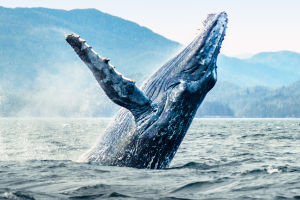Hello, Lykkers! Let’s take a moment to imagine something extraordinary. Picture standing in the middle of a dry, cracked desert. The sun beats down, and there’s nothing but sand for miles.
Now imagine that same landscape transformed into a forest filled with trees, birds, and shade. Sounds impossible? Not quite. Science is taking this big idea seriously, and today, we’re asking: Could we really grow forests in the desert?
Why Even Try to Grow Forests in Deserts?
At first glance, it might seem like a wild idea. Deserts are harsh environments, after all—hot, dry, and unforgiving. But here’s the catch: deserts cover around one-third of the Earth’s land surface. That’s a huge amount of unused space. Meanwhile, our planet faces rising temperatures, shrinking forests, and growing demands for natural resources.
Turning deserts into forests could offer a long list of benefits. It could help absorb carbon dioxide, cool local climates, prevent soil erosion, restore biodiversity, and even create jobs and new ecosystems. It could also combat desertification, where once-healthy land turns into desert due to drought and poor land use. In short, growing forests in deserts could be a game-changer.
What Makes It So Hard?
While the idea is exciting, the reality comes with serious challenges. Deserts aren’t just dry—they’re extreme. Let’s break down the main problems:
Little to no rainfall: Many deserts receive less than 25 centimeters of rain per year.
Intense heat: Temperatures in some deserts regularly rise above 45 degrees Celsius during the day and drop drastically at night.
Poor soil: Desert soil is usually sandy and lacks the nutrients needed for most plant life.
Strong winds and sandstorms: These can damage or bury young plants and remove moisture from the soil.
Growing a forest in such an environment isn’t impossible—but it takes innovation, patience, and science.
How Can We Make It Work?
Let’s look at the exciting technologies and methods that are helping turn this idea into reality.
1. Drip Irrigation and Desalination
Drip irrigation systems allow water to be delivered directly to the roots of plants, using very little water. Combine that with solar-powered desalination (which turns seawater into freshwater), and you have a sustainable water supply in even the driest places.
2. Liquid Nanoclay (LNC)
This innovative method involves mixing clay nanoparticles with water and spraying them onto sandy soil. The result? Sandy deserts start to behave more like fertile farmland by holding water and nutrients better. Early tests show promising results.
3. Native and Salt-Tolerant Plants
Instead of importing trees that can’t survive desert life, scientists use local species that are already adapted to the environment. These plants are tough, water-efficient, and often help improve soil for future growth.
4. Fog Catchers and Dew Harvesters
In some deserts, there’s moisture in the air, even if there’s no rain. Fog catchers—large mesh nets—can capture water droplets from fog and dew, collecting it for use in irrigation. It’s a low-tech but brilliant solution.
Where Is This Actually Happening?
This isn’t just theory. Several countries are already working on turning deserts green. The United Arab Emirates has tested growing forests using nanoclay and treated wastewater. Egypt is experimenting with desert farming using drip irrigation. Even countries like Australia are exploring how native desert plants can be part of sustainable forestry.
These projects are still developing, but they prove one thing: with enough effort and the right approach, it’s possible.
Can We Really Do It?
The answer is yes—with caution and commitment. While not every desert can or should become a forest, select areas can be transformed in ways that benefit both people and the planet. It takes science, smart resource use, and respect for local ecosystems.
Final Thoughts
So, Lykkers, the idea of growing forests in deserts isn’t a fantasy—it’s a real possibility that’s already taking root in parts of the world. It’s a story of creativity, resilience, and hope. And it reminds us that with innovation and determination, even the harshest landscapes can bloom again.
Got more big science questions in mind? Let’s keep exploring together.


